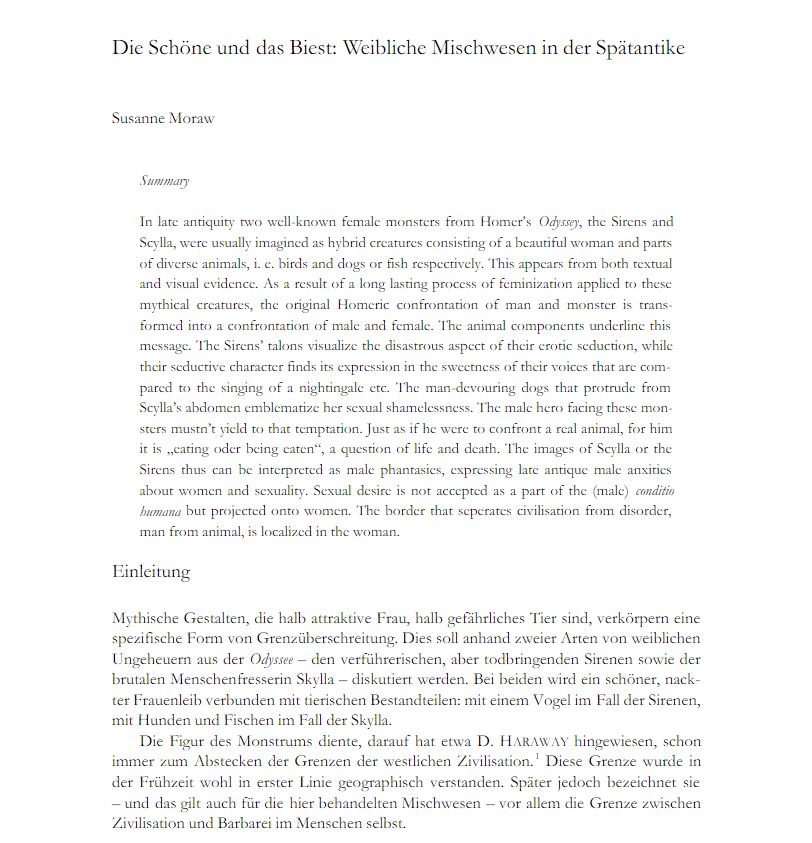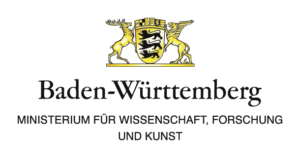Die Schöne und das Biest: Weibliche Mischwesen in der Spätantike
„In late antiquity two well-known female monsters from Homer’s Odyssey, the Sirens andScylla, were usually imagined as hybrid creatures consisting of a beautiful woman and partsof diverse animals, i. e. birds and dogs or fish respectively. This appears from both textualand visual evidence. As a result of a long lasting process of feminization applied to thesemythical creatures, the original Homeric confrontation of man and monster is trans-formed into a confrontation of male and female. The animal components underline thismessage. The Sirens’ talons visualize the disastrous aspect of their erotic seduction, whiletheir seductive character finds its expression in the sweetness of their voices that are com-pared to the singing of a nightingale etc. The man-devouring dogs that protrude fromScylla’s abdomen emblematize her sexual shamelessness. The male hero facing these mon-sters mustn’t yield to that temptation. Just as if he were to confront a real animal, for himit is „eating oder being eaten“, a question of life and death. The images of Scylla or theSirens thus can be interpreted as male phantasies, expressing late antique male anxitiesabout women and sexuality. Sexual desire is not accepted as a part of the (male) conditiohumana but projected onto women. The border that seperates civilisation from disorder,man from animal, is localized in the woman.“
Autor: Susanne Moraw
Rezensionen
Es gibt noch keine Bewertungen. Schreibe selbst die erste Bewertung!






